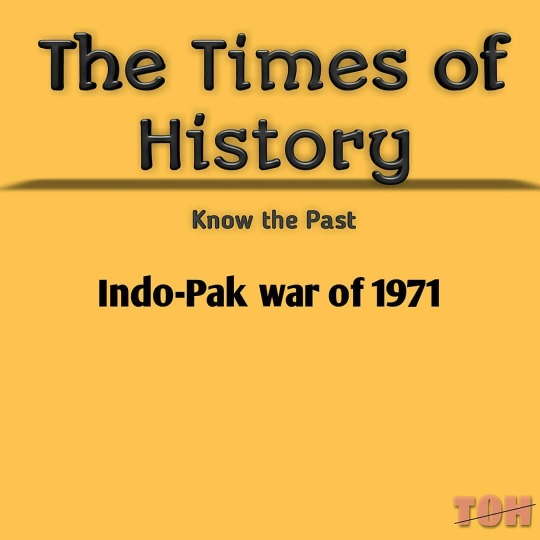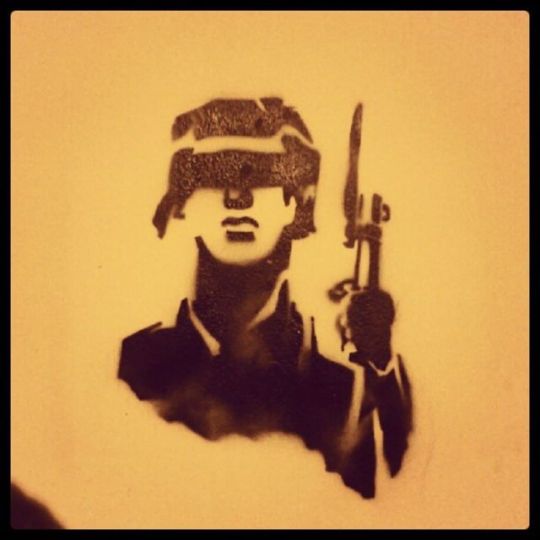#muktibahini
Explore tagged Tumblr posts
Photo

Join me for #SMHM Swarnim Maitri Half Marathon by Indian Navy - The mega event will pay tribute and honour the sacrifices made by our brave armed forces and 'Mukti Bahini' during the 1971 Indo-Pak war. Register here for SMHM- https://smhmindiannavy.com// To avail additional 10% benefit apply code MURADABAD #running #marathon #halfmarathon #India #Bangladesh #Muktibahini #IndianNavy #IndianAirForce #IndianArmy #BSF #1971WarVictory #GoldenJubilee #swarnimvijayvarsh https://www.instagram.com/p/CV83vSiKamq/?utm_medium=tumblr
#smhm#running#marathon#halfmarathon#india#bangladesh#muktibahini#indiannavy#indianairforce#indianarmy#bsf#1971warvictory#goldenjubilee#swarnimvijayvarsh
1 note
·
View note
Photo

Ever thought how was the creation of Bangladesh carried out and how India helped? . . Why except USSR no one supported India? If Pakistan had the support of US then why did they lose the war? These are topics of another post of @timesofhistory . . Follow us : @timesofhistory . . #indiapakistan #indiapakistanwar #indopak #indopakwar1971 #indopakwar #indopakborder #indopakwar71 #bangladesh #historyofbangladesh #historyofindia #1971war #bangladeshliberationwarof1971 #indiapak #indianwars #historyofpakistan #eastpakistan #historyofbengal #bengal #bengali #westbengal #muktibahini #bangladeshmilitary #indianarmedforces #liberationwar #liberationwarofbangladesh #partitionofindia #britishindia #historyfacts #knowthepast #timesofhistory https://www.instagram.com/p/CDRpTASpzGj/?igshid=r1i1nqkuoq4p
#indiapakistan#indiapakistanwar#indopak#indopakwar1971#indopakwar#indopakborder#indopakwar71#bangladesh#historyofbangladesh#historyofindia#1971war#bangladeshliberationwarof1971#indiapak#indianwars#historyofpakistan#eastpakistan#historyofbengal#bengal#bengali#westbengal#muktibahini#bangladeshmilitary#indianarmedforces#liberationwar#liberationwarofbangladesh#partitionofindia#britishindia#historyfacts#knowthepast#timesofhistory
0 notes
Photo

নূরজাহান কাকন বিবি। বাড়িঃ জিরারগাও, সুনামগঞ্জ। Kakon Bibi left home for war in 1971 but was held and tortured by the Pakistani occupation forces. She, later, took training on operating arms and joined freedom fighter, Rahmat Ali. She also served as a secret agent for the Muktibahini (the guerrilla resistance movement formed by the Bangladeshi military, paramilitary and civilians during the War of Liberation). Bibi took bullets while fighting at Tengratila in Sylhet in November. The injury marks are still visible on her knee. She fearlessly fought the war at multiple locations across the north-eastern district. Bangladesh government honoured her with Bir Pratik, the fourth highest gallantry award in Bangladesh, in 1996. #internet https://www.instagram.com/p/CCq6DufDYkA/?igshid=fczjzw9xvtwj
0 notes
Photo

This stencil street art was sent to us by @utalantor taken near Madhur Canteen, University of Dhaka during the Shahabag movement in Dhaka in 2013. This piece was clearly inspired by Bangladeshi artist Nitun Kundu's famous poster "Sada Jagrata Banglar Muktibahini - সদা জাগ্রত বাংলার মুক্তিবাহিনী" #TheGreatBengalStory #streetart #revolution -------------------------- Do you have photos/artworks that tell a story? DM us here or Facebok, we'll feature on @thegreatbengalstory #art #artstation #artist #artistsontumblr #artoftheday #artsy #Bangla #banglaart #bengalart #bangladesh #bengal #artexhibit #culture #history #liberation #freedom https://www.instagram.com/p/BmMGkM0Fss4/?igshid=1io7hyr9emv86
#thegreatbengalstory#streetart#revolution#art#artstation#artist#artistsontumblr#artoftheday#artsy#bangla#banglaart#bengalart#bangladesh#bengal#artexhibit#culture#history#liberation#freedom
0 notes
Text
Opinion: Indian Army's out of the box thinking won 1971 war
The history of Bangladesh's liberation from Pakistan is inextricably entwined with outstanding acts of bravery committed by Indian soldiers. Artificially separated by the British during the Partition, the brave warriors of India and Bangladesh fought shoulder to shoulder to wrest independence from an oppressive regime. The anecdotes of gallantry are endless. But, perhaps, some acts of heroism were more decisive than the others. For instance, without the out of box thinking of Lt Gen Sagat Singh that expedited the capture of Dacca, the capital of erstwhile East Pakistan, Lt General AAK Niazi would have held back surrendering to India. Lt Gen Sagat Singh's decisive action saved lives of many soldiers and made the birth of Bangladesh possible.
Lt Gen Sagat Singh was a paratrooper and General Officer Commanding of IV Corps of Indian Army. He also has the distinction to command the coveted 50 (independent) Parachute Brigade of Indian Army and liberate Goa in 1961.
When the war broke out, IV corps went into action in the Agartala sector. In the initial advances, Indian Army and Muktibahini secured all the routes to Meghna River. The only way across the river was over the Ashuganj Bridge.
General Singh got this unique idea of airlifting his troops over Meghna River which proved to be a turning point in the liberation of Bangladesh.
×
Ashuganj Bridge was the only bridge that spanned the huge Meghna River which at its narrowest point was more than 4000 yards wide. With his troops at Ashuganj, Singh, however, realised his formation would be joining the race to Dacca. Due to the resistance offered by the Pakistani army, 2 Corps which was supposed to reach and isolate Dacca was held up at Kushtia and did not make it to Dacca. So, General Sagat Singh decided that his forces should move to Dacca.
youtube
×
However, the Pakistan Army had destroyed the entire bridge and it would require a significant amount of time for Army Engineers to build a new bridge. General Singh got this unique idea of airlifting his troops over Meghna River which proved to be a turning point in the liberation of Bangladesh.
Indian Air Force came into the action under the leadership of Group Captain Chandan Singh, using the Soviet-made Mi-4 helicopters to airlift troops in many waves. Through the night of 9 December, the IAF air-lifted the entire 311 Brigade. The first troops, numbering around six hundred were landed through the night of the 9th, immediately contacting Pakistani troops north of Raipura.
Captain Chandan Singh used MI-4 Helicopters to airlift Indian troops in many waves. (Others)
×
They, however, held their positions, with the IAF flying in reinforcements. Over the next 36 hours, over 110 sorties were flown. The Mi-4, which normally carried 14 troops, carried as many as 23 on board. Simultaneous to this operation, 73rd Brigade moved across Meghna on boats and riverine crafts.
After the first consolidation in Raipura, the forces were lifted again to Narshingdi, and after Capturing Narshingdi, brave Indian forces occupied towns of Daudkandi and Baider Bazar on 14th and 15th December 1971 respectively. It was an idea full of risks which paid rich dividends and by 15th of December, 1971 the entire garrison town of Dacca was surrounded by Indian Forces which compelled Lt General AAK Niazi to accept the surrender request.
It is this out of box thinking - the decision of using the airforce to uplift the Indian Army rather than trying to cross the mighty Meghana river proved to be the most decisive factor of the 1971 War.
(Disclaimer: The opinions expressed above are the personal views of the author and do not reflect the views of ZMCL).
]]>
0 notes